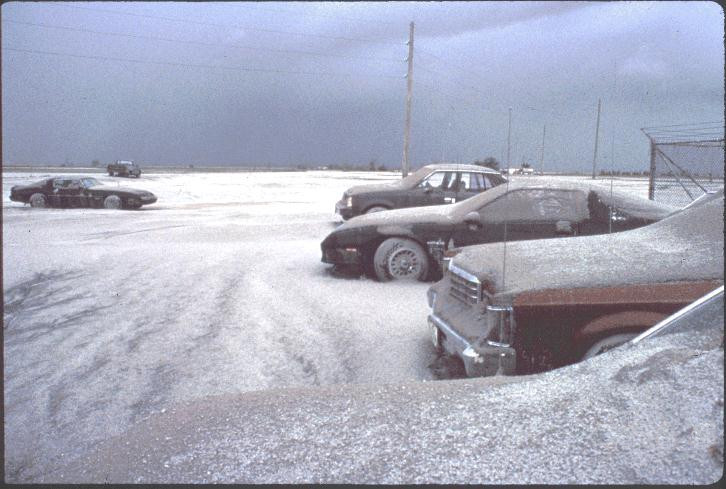Mount Pinatubo
 Some cool photos I found of the Mount Pinotubo eruption of 1991. I thought they tied in well somehow with yesterday's quick glimpse of shanty life......this way of living was everywhere when I visited the Phillippines in 1999--people living in the worst conditions and it made you wonder how the hell they can get by. As if poverty wasn't enough, there are natural disasters to add to the misery. Whether it be Hurrican Katrina or the Tsunamis more recently, each event affects so many and makes the people who aren't directly affected realize their fortunate state of being. That winter I drove through northern Luzon and witnessed the aftermath of Mt Pinatubo, which was the 2nd largest volcanic eruption of the 20th Century. It was 8 years later and the areas were still destroyed by the blast.
Some cool photos I found of the Mount Pinotubo eruption of 1991. I thought they tied in well somehow with yesterday's quick glimpse of shanty life......this way of living was everywhere when I visited the Phillippines in 1999--people living in the worst conditions and it made you wonder how the hell they can get by. As if poverty wasn't enough, there are natural disasters to add to the misery. Whether it be Hurrican Katrina or the Tsunamis more recently, each event affects so many and makes the people who aren't directly affected realize their fortunate state of being. That winter I drove through northern Luzon and witnessed the aftermath of Mt Pinatubo, which was the 2nd largest volcanic eruption of the 20th Century. It was 8 years later and the areas were still destroyed by the blast.
Town covered in ash.
This is what the mouth of the volcano looks like today. It has filled with water and looks like a beautiful lake.
From Wikipedia on Mount Pinatubo:
"Mount Pinatubo is an active stratovolcano located on the island of Luzon in the Philippines, at the intersection of the borders of the provinces of Zambales, Tarlac, and Pampanga. Ancestral Pinatubo was a stratovolcano made of andesite and dacite. Before 1991, the mountain was inconspicuous and heavily eroded. It was covered in dense forest which supported a population of several thousand indigenous people, the Aeta, who had fled to the mountains from the lowlands when the Spanish conquered the Philippines in 1565.
The volcano's eruption in June 1991 produced the second largest terrestrial eruption of the 20th century.[2] The 1991 eruption had a Volcanic Explosivity Index (VEI) of 6, and came some 450-500 years after the volcano's last known eruptive activity (estimated as VEI 5, the level of the 1980 eruption of Mount St. Helens), and some 500-1000 years after previous VEI 6 eruptive activity.[3] Successful predictions of the onset of the climactic eruption led to the evacuation of tens of thousands of people from the surrounding areas, saving many lives, but as the surrounding areas were severely damaged by pyroclastic flows, ash deposits, and later, lahars caused by rainwater remobilizing earlier volcanic deposits, thousands of houses and other buildings were destroyed.[2]
The effects of the eruption were felt worldwide. It ejected roughly 10 billion metric tons of magma, and 20 million tons of SO2, bringing vast quantities of minerals and metals to the surface environment. It injected large amounts of aerosols into the stratosphere—more than any eruption since that of Krakatoa in 1883. Over the following months, the aerosols formed a global layer of sulfuric acid haze. Global temperatures dropped by about 0.5 °C (0.9 °F), and ozone depletion increased substantially, but has since recovered."
2 comments:
Nice fill someone in on and this fill someone in on helped me alot in my college assignement. Thanks you as your information.
[url=http://www.payloansonline.com]online payday advance[/url]
This is the best way to get all your health products online like green coffee, african mango, phen375 and others. Visit now
[url=http://www.squidoo.com/under-eye-dark-circle-cream]Revitol Dark Circle Cream[/url]
Post a Comment